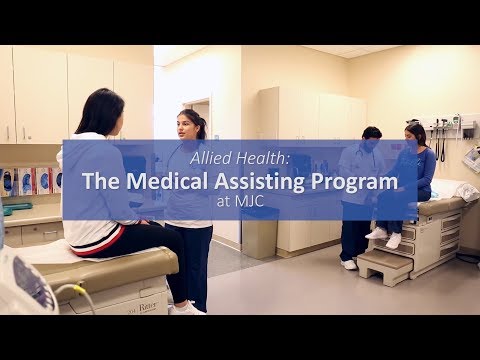What’s the Difference Between a Medical Scribe and a Medical Assistant?
Contents [show]
The medical scribe is a new and exciting position in the medical field. With the advent of electronic medical records the scribe is becoming an integral part of the medical team.
Checkout this video:
Job responsibilities
Medical scribes work in tandem with physicians, providing them with real-time documentation of patient care. Scribes are responsible for documentation in the electronic health record (EHR), so they must be able to type quickly and accurately. They also may be responsible for ordering lab tests and radiology studies, and for calling patients with test results.
In contrast, Medical assistants have a more hands-on role in patient care. They may take vital signs, such as blood pressure and temperature, and record medical history. Medical Assistants also may give injections, prepare patients for exams, assist with minor surgical procedures, and provide patient education.
Education and training requirements
Medical scribes are trained to provide documentation support for physicians and other medical providers. In contrast, medical assistants are multi-skilled health professionals who perform both clinical and administrative tasks in medical offices and clinics. Although the two roles are similar in some respects, there are important differences in terms of education and training requirements, scope of practice, and job duties.
Medical scribes typically have at least a high school diploma, although some companies may prefer applicants with some college coursework or experience in a related field such as healthcare or transcription. Medical assistants, on the other hand, must complete an accredited medical assisting program that includes both classroom instruction and clinical externship hours. Most states also require medical assistants to be certified by a professional organization such as the American Association of Medical Assistants (AAMA).
In terms of scope of practice, medical scribes are solely responsible for providing documentation support to physicians and other providers. This may include transcribing patient histories and notes, documenting physician-patient interactions, and entering relevant information into electronic health records (EHRs). Medical assistants, on the other hand, perform both clinical and administrative tasks. Clinical duties may include taking patient vital signs, administering medications and injections, handling laboratory specimens, and performing basic diagnostic tests. Administrative duties may include scheduling appointments, verifying insurance coverage, handling billing and coding tasks, and maintaining Medical records
When it comes to job duties, medical scribes typically work directly with physicians in hospital settings such as emergency departments or outpatient clinics. They may also work with other healthcare providers such as nurse practitioners or physician assistants. Medical assistants usually work in physician offices or clinics, although they may also be employed in hospitals or other healthcare facilities. Some medical assistants may specialize in one particular area such as ophthalmology or dermatology.
Salary
There is a big difference in salary between a medical scribe and a medical assistant A medical scribe typically earns much more than a medical assistant The average salary for a medical scribe is around $40,000 per year, while the average salary for a medical assistant is around $30,000 per year.
Work environment
One big difference between a medical scribe and a medical assistant is their typical work environment. Medical scribes usually work in the exam room with the physician, while medical assistants are often stationed in a central location such as a nurse’s station. This difference can have an impact on the medical scribe’s duties and responsibilities, as they are more likely to be privy to confidential patient information and may be involved in direct patient care.
Career outlook
Both medical scribes and medical assistants (MAs) typically work in outpatient settings, such as doctor’s offices, clinics, and hospitals.
MAs have more responsibilities than scribes. In addition to performing clerical duties, such as scheduling appointments and handling billing and insurance paperwork, MAs may also be responsible for tasks such as taking medical histories and vital signs, preparing patients for exams, providing instruction on wound care or medications, and performing basic lab tests.
The job outlook for both careers is positive. The Bureau of Labor Statistics projects that employment of MAs will grow 29 percent from 2019 to 2029, much faster than the average for all occupations. The demand for medical scribes is expected to grow along with the demand for MAs.
Pros and cons
Medical scribes and medical assistants are both important members of the healthcare team. They perform many of the same duties, but there are some key differences between the two roles.
Medical scribes work closely with physicians, documenting patient visits in real-time. This allows the physician to focus on the patient, rather than on documentation. Medical scribes also often help with charting and prepping patients for exams.
Medical assistants, on the other hand, perform a variety of administrative and clinical tasks. They may schedule appointments, take medical histories, give patients injections, and assist with procedures. In some states, they may also have limited prescribing authority.
Both medical scribes and medical assistants play an important role in patient care. The best candidate for each position will depend on the needs of the individual practice.
Key skills
There are a few key skills that separate medical scribes from medical assistants. First, scribes must be excellent at multitasking and be able to listen and document patient information accurately while the physician is seeing the patient. Second, scribes must have excellent typing skills and be able to type quickly and accurately. Third, scribes must have strong knowledge of Medical Terminology and be able to understand and document complex medical information. Finally, scribes must be able to work well under pressure and maintain a professional demeanor in fast-paced, high-stress environments.
Similarities and differences
Both medical scribes and medical assistants (MAs) work closely with physicians and other healthcare professionals to keep the workflow in a medical setting running smoothly and efficiently. They both perform administrative and clinical tasks, but there are some important differences between the two positions that prospective students should be aware of before making a decision about which one to pursue.
MAs are generally more involved in direct patient care, such as taking vitals, doing basic lab tests, giving injections, and assisting with minor surgical procedures. They may also chart patient encounters in the electronic health record (EHR), but their primary focus is on providing clinical support to physicians.
In contrast, scribes mainly work behind the scenes documenting patient visits in the EHR. They enter everything the physician says or does during a patient encounter into the record while it’s happening, which frees up the physician to focus on the patient instead of having to worry about documentation. Scribes also perform other administrative tasks such as scheduling follow-up appointments and ordering diagnostic tests.
Both MAs and scribes must have strong written and verbal communication skills, as well as proficiency with basic computer applications. However, scribes need to be especially accurate typists because they are responsible for entering sensitive medical information into the EHR. MAs also need to be proficient in typing and computer applications, but they may not need to be quite as fast or accurate because they are not responsible for directly entering information into the EHR.
The job outlook for both MAs and scribes is positive, with both occupations expected to grow much faster than average in the coming years. The Bureau of Labor Statistics projects that employment of MAs will grow 23 percent from 2016 to 2026, while employment of scribes is expected to grow 36 percent during that same time period.
Medical scribe vs. medical assistant: Which is right for you?
If you’re interested in a career in the medical field, you may be wondering what the difference is between a medical scribe and a medical assistant. Both positions involve working closely with patients and doctors, but there are some key differences between the two roles.
A medical scribe is responsible for documenting patient visits. This includes transcribing the doctor’s notes and keeping track of important information about the visit. Scribes also typically handle scheduling and billing for visits.
Medical assistants, on the other hand, are responsible for a variety of tasks both administrative and clinical. They may schedule appointments, take patient vital signs, prepare exam rooms, assist with procedures, and provide support to patients and doctors. In some states, medical assistants may also be able to perform basic lab tests.
So, which is right for you? If you’re interested in a career that involves working closely with patients and doctors and documenting important information about patient visits, then a career as a medical scribe may be a good fit for you. If you’re interested in a career that involves performing administrative and clinical tasks, then a career as a medical assistant may be right for you.
FAQs
What’s the Difference Between a Medical Scribe and a Medical Assistant?
The two terms are often used interchangeably, but there is a subtle difference between the two roles. A medical scribe is responsible for transcribing the physician’s notes and charting them into the patient’s medical record. A medical assistant, on the other hand, is responsible for performing administrative and clinical tasks to support the physician.
Both roles are crucial to the smooth running of a medical practice, but themedical scribe is often seen as the more junior role.Medical assistants typically have more training and experience than scribes, and they may be certified by an accredited organization such as the American Association of Medical Assistants.







